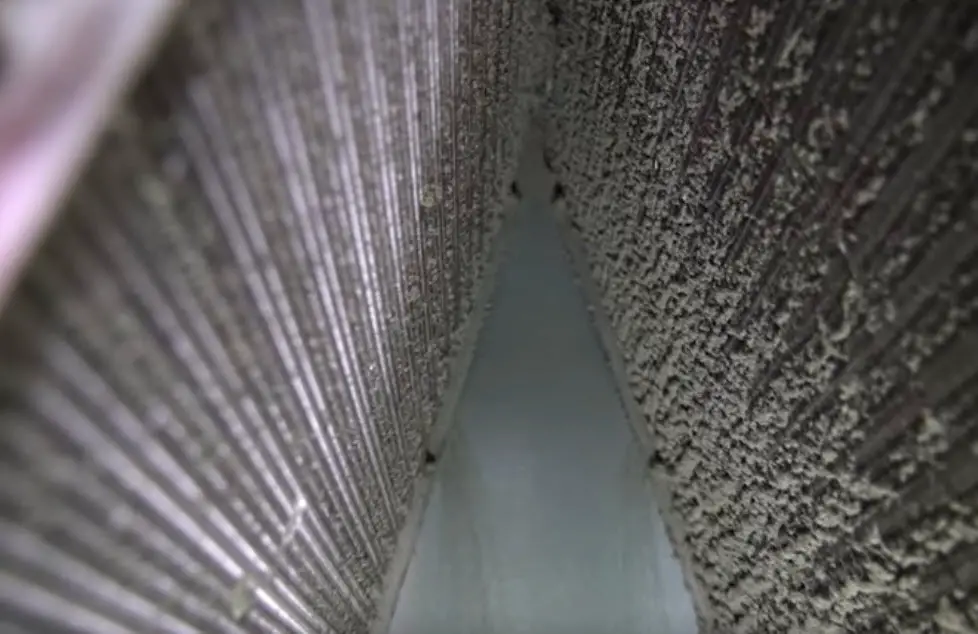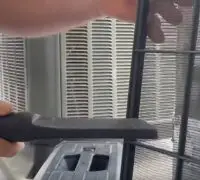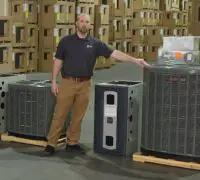You want it to perform as expected when you have an air conditioner. You don’t want a unit that blows out warm air in the middle of the summer, for sure. One of the many components of the air conditioner that ensure its adequate performance is the evaporator coil.
Page Table of Contents
What is the evaporator coil?
The evaporator coil is an essential component of the ac unit as it absorbs heat and moisture from inside the house. Together with the condenser coil, it will generate cool air and complete the heat exchange process. Together with the components of your Trane A/C unit, the evaporator coil will cool the house and take the heat outside of your home.
If the evaporator coil is broken, the house will not get cool as expected. It’s essential to recognize the signs of a broken evaporator coil. You don’t want to spend the summer trying to fix the ac unit when you could have fixed it in the early stages by managing the evaporator coil issues.
Important note
The air conditioner is a high-voltage device and can cause injuries when not cautious. You should never touch nor mishandle the internal elements as they could cause severe injury and even death. If you deal with problems with the ac unit, we strongly recommend you contact a licensed and experienced HVAC technician.
How to access a Trane evaporator coil
In order to manage any problems with the evaporator coil, you need to know where it’s located. The evaporator coil is connected to the furnace or inside the air handler—it depends on the system. The ac evaporator coil is placed inside the part of the ac unit that stays inside your house.
Call the HVAC professional to address and manage problems with the evaporator coil.
How to tell if the evaporator coil is faulty
The moment you notice any of the following telltale signs, contact the certified HVAC technician in your area. He can come and check out the ac evaporator coil. Here are the signs that something’s wrong with the evaporator coil:
- The unit doesn’t turn on
- The ac starts and stops but doesn’t complete the cooling process
- The unit emits warm air from the vents inside the house
- You can actually notice a refrigerant leak close to the indoor cooling component
- The ac unit produces loud noises (bangs, hiss) both from the inside and outside unit
Important note
Keep in mind that the ac refrigerant is a toxic chemical. If you touch or mishandle the ac refrigerant, you may end up with an injury or even death. See that no small children and pets get close to the refrigerant leaks. If you experience issues with the air conditioner, contact a certified and experienced HVAC technician. Sometimes, the evaporator coil will require cleaning or replacing.
How to clean the Trane evaporator coil
You need to check out and clean the evaporator coil as necessary. Monthly cleaning is recommended if the coils collect debris and dirt quickly. If not, cleaning the coil every three months is enough during the cooling season.
The indoor handling unit has an access panel that you can remove to expose the evaporator coil. Check out the owner’s manual to discover where the access panel and evaporator coil are located.
Begin with turning the air conditioner off at the thermostat. Put the screws or fasteners aside to loosen the access panel. Put the panel and screws aside so that you don’t misplace them.
Clean the evaporator coil with compressed air
Don’t blow dirt, dust, and debris into the ductwork system or inside the house. Put on eye protection before cleaning the evaporator coil. If need be, collect dislodged material with a shop vacuum cleaner. Some HVAC technicians avoid using compressed air cleaning on the evaporator coil as blown dirt, dust, and debris will get inside the house. Open all windows to make sure that blown particles don’t remain inside.
You can use compressed air to blow dirt and other material accumulations from the evaporator coil. You should direct the compressed air across the coil opposite to regular airflow. Go from the cleaner to the dirtier area.
Put the air nozzle close to the bottom side of the dirt collection if it doesn’t go away quickly. Should you use high-pressure air, you need to direct it at a 90-degree angle or right through the fins. It will protect the fins from damage.
You should use a consistent airflow across the evaporator coil to dislodge buildup. You don’t want to push it further into the fins and have difficulties later removing it.
Clean the evaporator coil with a brush
You can remove minor dirt accumulations from the evaporator coil with brush cleaning. It’s an efficient method that doesn’t include any chemicals or liquids to have excellent control over the pressure you use on the coil and fins.
Apply the brush to the coil and slowly sweep dirt deposits away. Gently scrub with the brush to break the stubborn material. Don’t use hard-bristle or wire brushes because you will damage the fins.
Clean the AC evaporator coil with commercial cleaners
You can find commercial cleaners from various brands to clean the evaporator coil. Many of these cleaners are foaming types that will break down and drain away into the AC’s drainage system. Contact your certified HVAC contractor to see what commercial cleaner he recommends you for your Trane unit.
Read and follow the instructions on the commercial cleaner. Typically, the steps to take will be:
- Spray the cleaner on the coil
- Let the foam action take place
- Wait until the foam and debris drain away
- Apply the cleaner once again. It may take several steps until you remove all dirt buildup and completely clean the coil.
Clean the evaporator with water and mild detergent
If you don’t want to use a commercial cleaner, a mix of warm water and a mild detergent can work.
- Mix some warm water with a detergent in a spray bottle, garden sprayer, or hand sprayer
- Spray the mix of water and detergent on the evaporator coil
- Let the solution work for several minutes. You want it to soak in and loosen dirt buildup.
- Repeat the action if the dirt doesn’t loosen up
- Use a soft cloth or brush to wipe away the dirt material
Heavy-duty cleaning of the evaporator coil
If the evaporator coil is heavily dirty, you might need powerful chemicals or even complex cleaning techniques (using a steam cleaner or a pressure washer).
The complex cleaning process will include a revision to the AC system:
- Remove the coil
- Cut and reattach the refrigerant lines.
- Restore the vacuum in the refrigerant lines.
- Recharge or refill the system with refrigerant.
When the evaporator coil is heavily soiled or dirty, we recommend you contact the local HVAC contractor for professional maintenance and cleaning. He will analyze the situation and decide what equipment, material, and products to use for cleaning the cooling system without damaging the evaporator coil, fins, or other components.
What happens when you don’t clean the evaporator coil
A dirty evaporator coil will have various adverse effects, altering the air-blowing process as one of them. A dirty coil might have pollen, dust, or multiple particles that block the efficient air blowing.
When the evaporator coil is clogged or dirty, the airflow in the house will be significantly reduced. A decreased airflow will cause poor cooling times. As a result, you will wait a lot of time until the rooms get cooled. Sometimes, a room might never reach the maximum level of cooling due to a dirty evaporator coil. At this point, there’s a delay in the cooling performance. The cooling ability of your AC might be compromised permanently.
A dirty evaporator coil will cause an increase in the operating pressure, forcing the AC unit to operate at a higher than average temperature. It’s a negative effect as heat damages the other components of the AC unit.
All the AC unit parts will suffer from a dirty evaporator coil, and the unit’s lifespan will shorten. If you want your AC unit to last as expected, you need to stick to the maintenance schedule and clean the coils as necessary.
Last but not least, a dirty evaporator coil wears the system. When a component is failing, whether it’s the evaporator coil or something else, all the other AC unit components will try to compensate for the broken part and work harder than expected. Therefore, the components will develop a high risk of succumbing due to the dirty coil. When parts fail, it’s only a matter of time until all the system fails.






